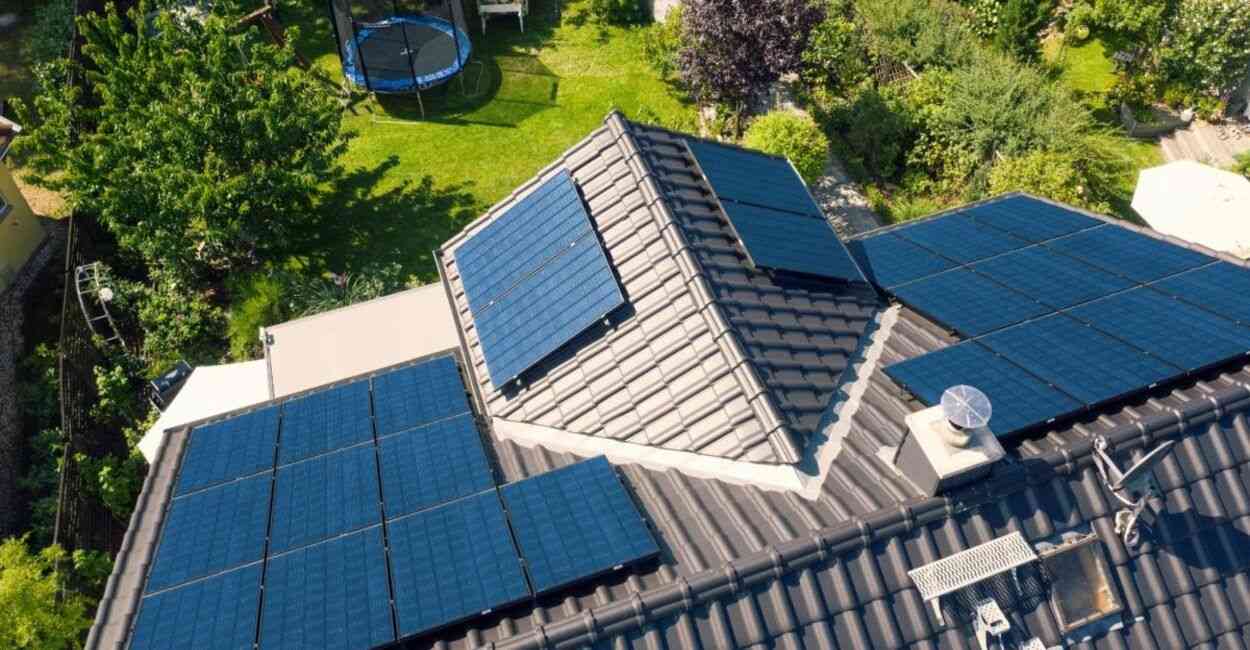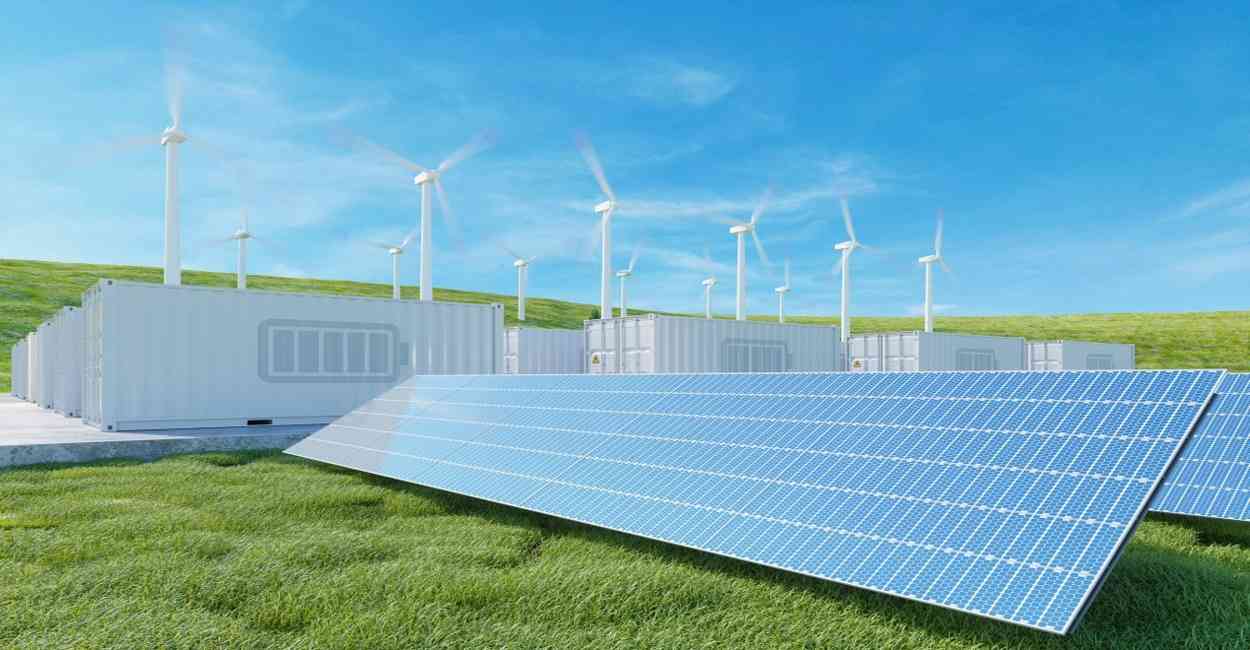The Role Of Battery Storage In A Solar Panel System

A solar battery is one of the most important additions to the solar power system. A solar battery is helpful for storing the excess electricity that the homeowner can use when the solar panels aren't generating enough energy.
Have you ever wondered about the question of how solar batteries work? Here in this article, we have explained what a solar battery is, how solar batteries work with a solar power system and the overall benefits of using solar battery storage.
What Do You Mean By A Solar Battery?
A solar battery is a device that can add to the solar power system to store the excess electricity generated by your solar panels.
The users then can use that stored energy to power in Home Solar Panel Battery System at times when their solar panels don't generate enough electricity for nights, cloudy days, and during power outages.
The point of a solar battery is to help you use more of the solar energy you're creating. If you don't have battery storage, any excess electricity from solar power is shifted to the grid. This simply states that the system is generating power and providing it to other people without taking the benefits of the electricity that is produced by the panels.
The Science Of Solar Batteries
Lithium-ion batteries are the most popular form of solar batteries in the market. These batteries use similar kinds of technology that are used for smartphones and other high-tech batteries.
Lithium-ion batteries work through a chemical reaction that stores chemical energy before converting it to electrical energy. The reaction occurs when lithium ions release free electrons, and those electrons flow from the negatively-charged anode to the positively-charged cathode.
This movement is enhanced by lithium-salt electrolyte, a liquid available inside the battery, and is helpful in balancing the reaction by providing the necessary positive ions.
At the time of drawing the electricity from the battery, the lithium ions flow back across the electrolyte to the positive electrode. Thus, the electrons are moved from the negative electrode to the positive electrode and power the plugged-in device.
Home solar power storage batteries are a combination of multiple-ion battery cells with sophisticated electronics that regulate the performance and safety of the whole solar battery system. Thus, solar batteries function as rechargeable batteries that use the power of the sun and initiate the whole process of creating an electrical current.
Comparing Battery Storage Technologies
There are a variety of solar batteries available in the market. Some of them are lithium-ion and lead-acid. Solar panel companies prefer lithium-ion batteries as they can store more energy, and can also hold that energy longer than other batteries, and have a higher Depth of Discharge.
Generally, the Depth of Discharge is the percentage to which a battery can be used, related to its total capacity. For instance, if a battery has a DoD of 95%, it can safely use up to 95% of the battery's capacity before it needs to be recharged.
Lithium-Ion Battery
The battery manufacturers prefer to manufacture lithium-ion battery technology for its higher DoD, reliable lifespan, ability to hold more energy for longer, and more compact size. However, due to its numerous benefits, lithium-ion batteries are more expensive than lead-acid batteries.
Lead-Acid Battery
Lead-acid batteries have been around for many years and have been used widely as in-home energy storage systems for off-grid power options. The feature of these kinds of batteries is that they have pocket-friendly prices. Their popularity is fading due to low DoD and shorter lifespans.
How Much Battery Storage Does A Solar Pv System Need
When considering how many batteries are required in a solar panel system, here we have got something for you.
Batteries for solar storage are designed to hold power as a complete system. There is a variety of sizes available in the market. The smaller systems may be, 2kW while a larger system could hold up to 10 kWh of stored energy.
Battery sizes are expressed in kilowatt-hours (kWh). It is always mandatory to consider the kilowatts, a measurement of power, and kilowatt-hours, a measurement of energy by the customer before buying one.
The energy capacity of a battery is measured on the basis of kilowatt-hours.
People work in the daytime, using about 1/3 of their energy during the day. However, at night, everyone is at home; it is the time when the solar panels aren't producing any energy.
Different Types Of Solar Energy Storage Systems
Off-grid Solar Storage System
Those using this solar storage system are not connected to the public utility grid. In order to use an off-grid system, the candidate must have enough batteries for storage. The building structure of the solar system must be in such a way that your home will be powered throughout the year.
Batteries are categorized under the chemical methods of energy storage. Batteries convert chemical energy to electrical energy. This is made possible by the availability of electrochemical cells in the batteries.
On-Grid Solar Storage System
On-Grid storage systems are also termed grid-tied systems. This system makes use of a standard grid-tied inverter and does not have any battery storage. The homeowners can store some energy on the public utility grid, and the excess solar energy generated in their home can be exported in exchange for some credits or feed-in tariff.
Hybrid Solar Battery Storage Systems
A hybrid energy system is the combination of two or more energy systems. This system of solar is used for energy production. This is a combination of solar technology and wind turbines for energy production.
While using this type of system, solar energy generated is stored in batteries while the customer makes use of the public utility. When the energy in the batteries is used, the users can comfortably switch to the utility grid. On the other hand, when there is a power outage from the public utility grid, one can also switch to your battery.
Solar Fuels
This type of solar energy storage system is still under the stage of progress. Currently, solar fuel is not very common in the commercial energy market. Solar fuels are synthetic chemicals like hydrogen, ammonia, and hydrazine that are produced and stored for periods when there is no sunlight.
Stratified Solar Energy Storage System
Solar energy can be harnessed and used in two ways. Firstly, by using PV cells and secondly by CSP. A stratified energy storage system works along with CSP. It involves the storage of solar energy as thermal energy which can be converted to electricity when required.
Solar Ponds
Solar ponds can also work perfectly with the combination of Concentrating Solar-thermal Power systems.
A solar pond is a body of water that collects and stores solar energy. When the sunlight hits a saline pond, it first heats up the water at the bottom of the pond. The water becomes less dense, and through convection, its molecules rise to the surface.

Is A Solar Battery Bank Worth It?
The usability of the solar battery is totally dependent on what you're trying to accomplish with the batteries. If you're looking to reduce the cost of energy, a solar battery bank can definitely be worth it.
Solar battery banks allow you to charge up energy during the day and then use it to power your home during peak energy hours. This potentially helps in saving money in the long run. In addition to this, solar battery systems can also help reduce the environmental footprint by relying on clean, renewable energy from the sun.
The solar battery system is inclusive of certain upfront costs and ongoing maintenance that may or may not make them a cost-effective option depending on your budget and energy needs. For instance, the cost of the battery, installation, and any repairs or maintenance will be necessary.
Ultimately, it's important to do your research, weigh your needs and budget, and make an informed decision about the same.
Pros And Cons Of Solar Battery Storage
Cons of Solar Battery Storage
• Higher upfront costs than other residential solar energy systems,
• More complexity estimates to get the backup load right for your needs,
• More parts that need yearly inspection and/or maintenance, and
• It puts you into a Time-of-Use rate plan with your electrical utility company, resulting in higher electric bills if your solar system is not appropriately sized for your electrical usage.
Pros of Solar Battery Storage
• More incentives to recoup the costs of the system,
• 24/7 backup energy ready for a blackout emergency and nighttime needs that seamlessly keeps your house and its essential appliances running,
• Great energy independence from utility rate changes, i.e., no more bills,
• It can operate in tandem with a grid-tie system for greater efficiency and energy assurance,
• Very low maintenance and use the sun's power to charge the system,
• Excellent customer service support with any troubleshooting,
• Weather-resistant and family-friendly, safe to be around kids and animals anywhere in or outside your home,
• Customized system settings digitally and in real-time for maximum savings and personalization,
• Decreases your carbon footprint more and become net-zero energy users, and
• Noiseless backup energy, unlike generators.
Conclusion
Optimum utilization of renewable energy resources will keep the environment clean. Solar power is one of the most useful energy resources that is required to be utilized and stored.

